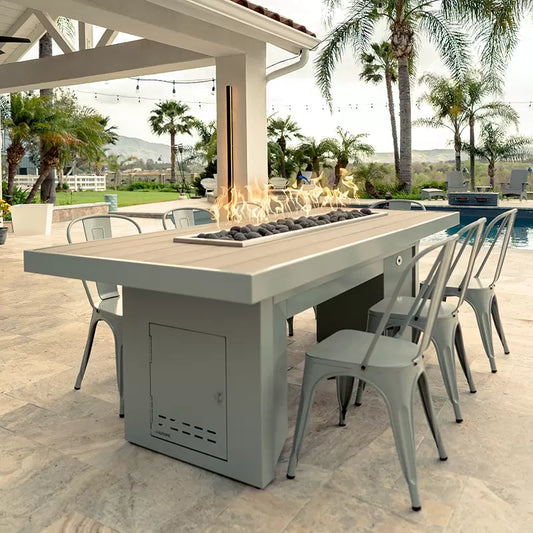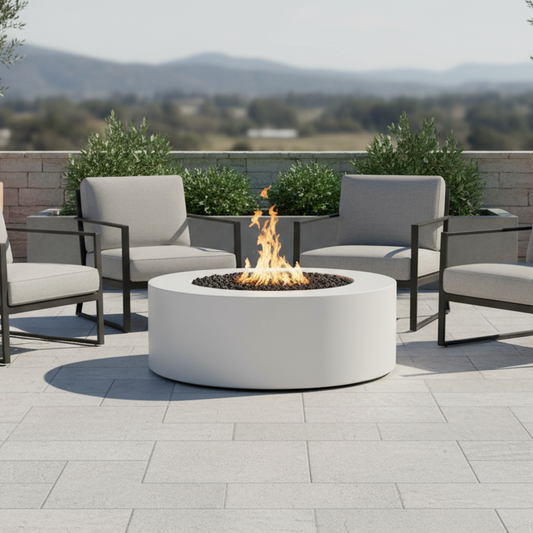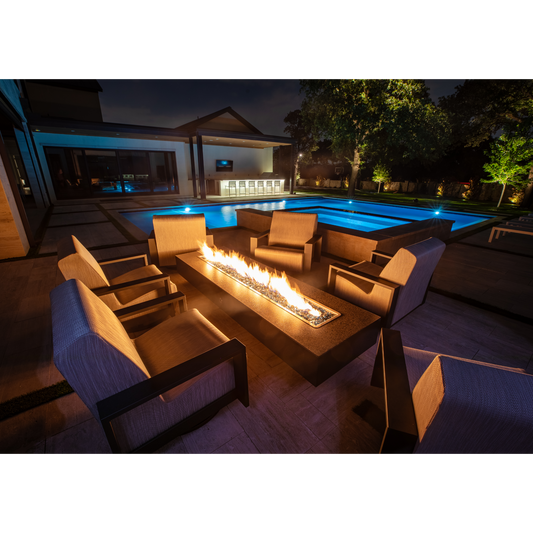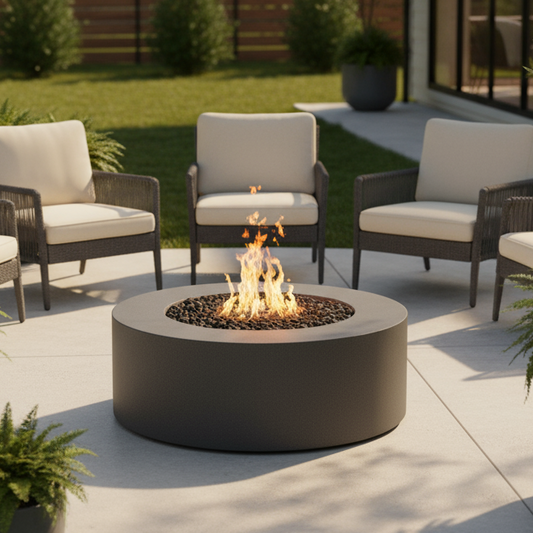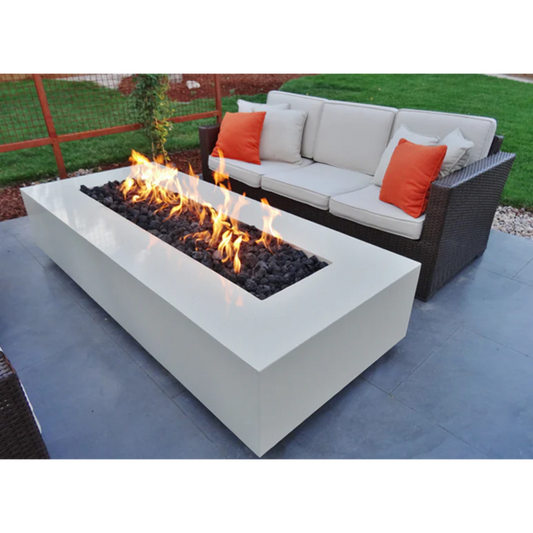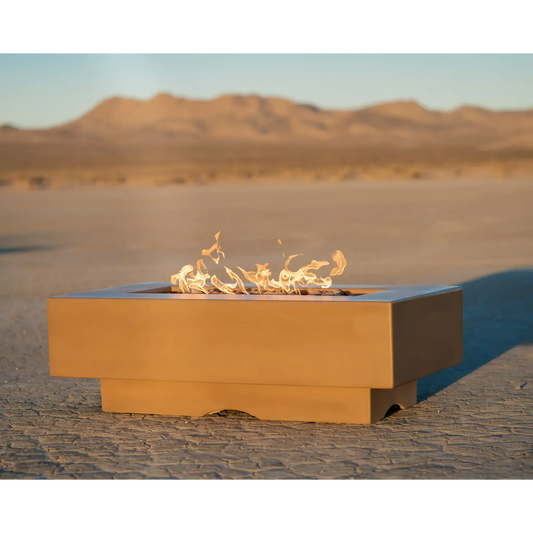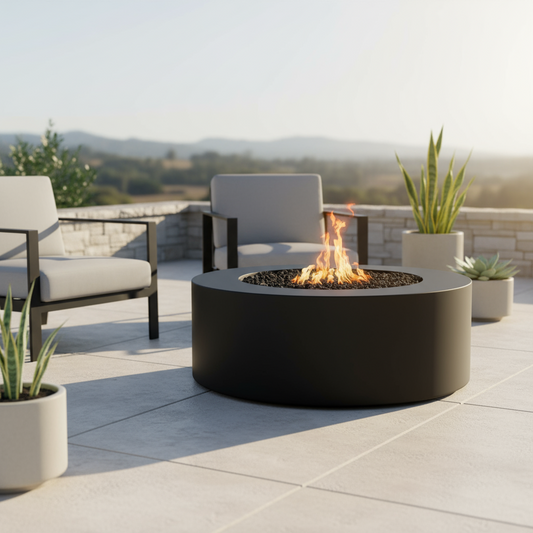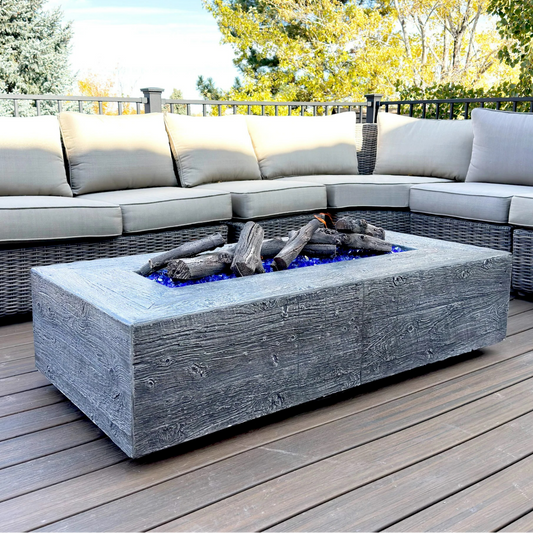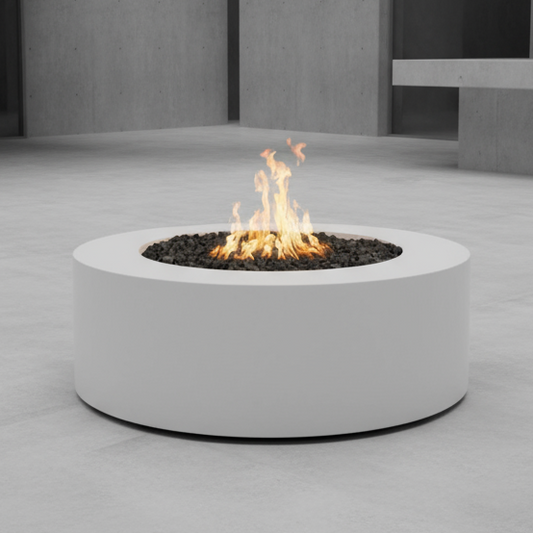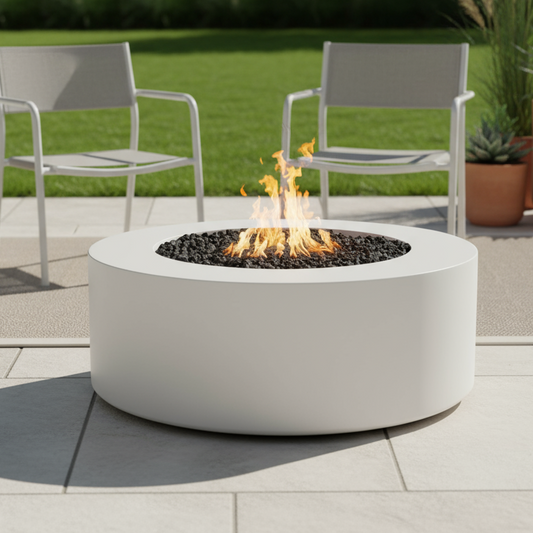Propane Fire Pit Tables: BTU, Tanks & Safety (Guide)

Share
If you’re shopping for a propane fire pit table, you want more than just a pretty flame—you need the right heat, tank setup, and safe placement for your patio or deck. This guide walks you through how many BTUs you actually need, whether to choose a hidden-tank or external setup, and the key safety clearances you can’t skip.
First time shopping for a fire pit table? Check out our Fire Pits & Fire Pit Tables : Complete 2025 Buyer’s Guide for everything on size, fuel, layouts, and safety basics. Then come back here to fine-tune the details on propane.
Browsing products? Have a look at our collection here: Fire Pit Tables
Table of Content
- Why Propane Fire Pit Tables Are So Popular
- BTU & Heat: How to Choose What Feels Comfortable
- Tank Options: Hidden vs External
- Runtime Basics (So You Don’t Run Out Mid-Party)
- Safety Basics You Must Follow
- Media, glass guards & heat management
- Buying checklist (copy/paste this before checkout)
- Troubleshooting quick-wins
- Next Steps
- FAQs
1. Why Propane Fire Pit Tables Are So Popular
Propane fire pit tables combine the real flame experience with easy setup and portability. Unlike natural gas, they don’t require plumbing. Unlike wood-burning fire pits, they don’t produce smoke, sparks, or ash.
That’s why homeowners love them for patios, decks, sectionals, and outdoor dining areas—they deliver ambiance, warmth, and style without the mess.
Who they’re great for:
-
Renters or anyone who can’t run a hard gas line
-
Hosts who want quick start/stop and easy flame control
- Style-driven patios where a clean, furniture-like look matters
Compare fuels here: Gas Fire Pit Tables: Natural Gas vs Propane (Costs & Installation)
2. BTU & Heat: How to Choose What Feels Comfortable
Manufacturers list BTU/hr on every fire pit, but the real warmth you feel depends on more than just the number on the spec sheet.
- Wind: even a light breeze sheds heat fast (wind guards help a lot)
- Seating distance: closer seats feel warmer; dining height loses heat faster than chat height
- Table/burner geometry: long rectangular burners spread heat along a sectional; small round tables concentrate heat
- Media & flame height: whether you use lava rock, glass, or ceramic logs, bigger flames burn more fuel but create a stronger, cozier radiant warmth
The image below is a comparison of a 30,000 BTU fire pit with and without a wind guard — without it, the flame and heat radius are smaller, while with a wind guard the flame is stronger, the heat spreads further, and comfort is improved.
This illustration above shows how the same fire pit, rated at 30,000 BTUs, can feel completely different depending on whether or not a wind guard is used. Without a wind guard, the flame is smaller, the heat radius is limited, and the person must lean in closer to feel the warmth. With a wind guard, the flame burns stronger, looks taller, and more consistently, creating a larger radiant heat zone that reaches further out. This means you can sit comfortably upright and still enjoy the warmth. A wind guard not only protects the flame from wind but also enhances both comfort and efficiency, making your outdoor fire pit experience more enjoyable.
Beyond comfort, wind guards also add an important layer of safety. They act as a protective barrier between the flame and the seating area, reducing the chance of clothing catching fire. This is especially valuable for people wearing scarves, long jackets, or loose clothing, as the glass shield helps keep fabrics away from the flame.
In short: a wind guard doesn’t just make your fire pit look more polished — it enhances comfort, efficiency, and safety, ensuring that the BTUs you pay for translate into a warmer, more enjoyable outdoor experience.
Quick BTU ranges for common layouts (propane)
|
Layout / Table Type |
Typical BTU Range |
Comfort Notes |
|
Small round (28–34") |
~30,000–45,000 BTU |
Cozy for 2–3 people; add a wind guard if breezy |
|
Medium round/square (36–44") |
~40,000–60,000 BTU |
Good for 4 seats all around |
|
Rectangular chat (60–72") |
~50,000–75,000 BTU |
Spreads heat along sectionals; seats 4–6 comfortably |
|
Dining / bar height |
~45,000–65,000 BTU |
Leaves rim space for plates/glasses but loses heat faster |
Rule-of-thumb upgrade triggers:
- Regular wind on your patio → choose the upper end of the BTU range + a wind guard
- Seating > 30 in (76 cm) from the flame → go up one size or pick a longer burner
- Under pergolas (open air) → still follow overhead clearances, but wind shelter helps warmth
3. Tank Options: Hidden vs External
Your tank configuration affects the look, space, and convenience of your fire pit. The setup you choose can change both the style and usability of your outdoor space, which is why it’s worth comparing hidden tank designs with external tank options.
Hidden tank inside the fire table (20-lb standard)
-
Pros: cleanest look, no visible hose; minimal pieces to manage
-
Trade-offs: slightly taller base; door clearance needed for swaps; marginally less legroom
-
Best for: design-focused patios where the table is the focal furniture piece
External tank in a matching side-table
- Pros: fastest swaps; more legroom under the main table; less crowding of the base
- Trade-offs: visible hose to manage; adds one more furniture piece
- Best for: frequent hosts who burn several nights a week or want quicker changeouts
Good to know (LP specifics)
-
A typical 20-lb cylinder holds roughly 4.7 gallons of propane (~430,000 BTU of energy)
-
Most table kits run low-pressure LP (~11" water column); always use the supplied regulator
- “Shorty” 20-lb tanks (same capacity, shorter form) can help with door clearance—check your base height
4. Runtime Basics (So You Don’t Run Out Mid-Party)
Max-flame theoretical hours (20-lb tank): Hours ≈ 430,000 ÷ Burner BTU
-
35k BTU → ~12.3 h (theoretical)
-
50k BTU → ~8.6 h
-
65k BTU → ~6.6 h
Real-world evenings: You won’t run max flame all night. With typical mid-flame use and some off time as guests come/go, expect:
-
35k BTU: ~6–10 evenings
-
50k BTU: ~5–8 evenings
-
65k BTU: ~4–6 evenings
Pro tips to extend runtime:
-
Keep two tanks in rotation (one in use, one full)
-
Add a tempered-glass wind guard to stabilize flame and reduce blowouts
-
Use a fitted cover when not in use (protects the media and burner from debris)
- Only use heat deflectors if your exact model is rated for them
5. Safety Basics You Must Follow
Most homeowner questions are about placement safety. Follow these golden rules plus your manual and local codes:
- Place on level, non-combustible surfaces; on composite/wood decks, add a rated deck pad
- Respect lateral and overhead clearances; pergolas need open airflow above (no enclosing curtains or canopies near the plume)
- Ensure ventilation for hidden-tank compartments; never pinch or coil hoses tightly
- After each setup or tank change, test connections with soapy water (no bubbles = no leak)
- Keep a Class B/C fire extinguisher nearby; never leave flames unattended
Certification & ignition options (what the labels mean):
- Look for CSA/ETL certifications on the appliance
- Ignition types:
- Match-lit: simple and durable; you control flame with a key/valve
- Push-button piezo/spark: easier start; no battery (piezo) or uses a small battery (spark)
- Flame-sensing / safety shutoff: detects loss of flame and cuts gas; great for breezy balconies
👉 For exact clearance diagrams, see our guide on Patio Fire Pit Table Layouts & Clearances.
6. Media, glass guards & heat management
- Media choices: lava rock (lightweight, classic), fire glass (modern sparkle, more radiant punch), ceramic logs (campfire look). Keep depth per your manual for airflow.
- Wind guards: stabilize the column and noticeably improve comfort in light breeze.
- Heat deflectors: can nudge warmth outward; use only if your unit is rated for one.
Explore our full Fire Pit Accessories Collection.
7. Buying checklist
-
☐ BTU matches your seating layout & wind exposure
-
☐ Shape/size fits: round, square, or rectangular (confirm footprint & knee-space)
-
☐ Tank option: Hidden ☐ | External side-table ☐
-
☐ Accessories: Wind guard ☐ | Fitted cover ☐ | Heat deflector (if approved) ☐
-
☐ Surface & clearances confirmed (deck pad if on wood/composite)
-
☐ Delivery path measured (doorways, gates, stairs)
-
☐ Ignition preference chosen (match-lit / spark / flame-sensing)
- ☐ Certification checked (CSA/ETL) & manual reviewed
8. Troubleshooting quick-wins
- Low or lazy flame (new tank): OPD valve may be throttling; close valve, wait 1 min, reopen slowly; check regulator is fully seated.
- Flame blows out in light wind: add a wind guard, increase flame slightly, re-seat media to keep ports clear.
- Yellow, sooty flame: usually poor air mix—verify media depth and venting; check that air shutter (if present) isn’t blocked.
- Regulator freeze in cold: keep tank off the cold ground (use a pad), avoid over-demand (lower flame), swap to a full tank.
9. Next Steps
Shop Now: Browse Propane Fire Pit Tables →
-
Compare fuels, shapes, and sizes in our Complete Fire Pit Tables Buyer’s Guide.
-
Learn more:
10. FAQs (propane-specific)
Is propane warmer than natural gas?
Not inherently. Comfort depends more on BTU, wind, and seating distance. Check out our blog on this topic here: Gas Fire Pit Tables: Natural Gas vs Propane
Can I put a propane firepit table on a deck?
Yes—use a rated deck pad, confirm clearances & ventilation, and follow your manual/local rules. Learn more about that here: Deck Safety: Using Fire Pits on Wood, Composite & Stone Decks
How long does a 20-lb propane tank last?
Typically 4–10 evenings depending on BTU and flame height. Keep two tanks in rotation.
Do I need a heat deflector?
Only if your model is rated for one. When allowed, they can nudge heat outward under open pergolas—but never use under solid overheads or near fabrics.
Do all propane tables hide the tank?
No. Some designs hide a 20-lb tank in the base; others pair with a matching side-table for faster swaps and more legroom.


